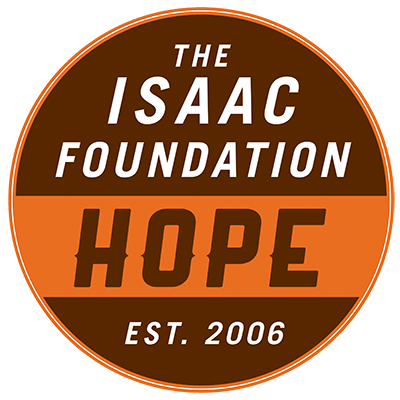In the past month and a half, Trey has had a number of tests, none of which I was really expecting. May is usually our busy testing month. However, starting on September 10, Trey had an MRI, a sleep study, numerous audiology appointments, osteopath, homeopath, and occupational therapy appointments, and a long afternoon in the EEG department where he had VEP, SEP, BAER and EMG done. Below are some of the results. I’ll update others when I get them:
Trey’s MRI results are good. He has no hydrocephalus and there are no brain changes from the last test, which was over two years ago. His brain does look different than someone who does not have MPS, but this is to be expected and I knew this from the last MRI. These differences do not indicate CNS involvement or not. An MRI cannot at this point in knowledge diagnose CNS involvement. The general anesthetic also went well. The anesthesiologist said he would not be able to tell Trey’s airways apart from someone who does not have MPS. Excellent news.
We have not yet received the results from Trey’s sleep study.
In mid-September, Trey got a cold. It is becoming a bit of a trend that when Trey gets a cold, he gets an ear infection, which leads to antibiotic ear drops, hearing tests, reduced hearing (which has never been permanent, just a result of the infection and fluid) and more hearing tests. One great thing about this ear infection is that it is the first time Trey localized his pain and was able to describe what it felt like. He said a bee was stuck in his ear. Otherwise we would not have known his ear was infected. A week after Trey started his antibiotic drops, Trey’s ENT doctor recommended a hearing test because the doctor thought Trey’s ear was clear, but he was still complaining of the bee. We found out that Trey’s hearing is between 10-25 decibals lower than it was in July. This could be because he’d had a sleep study the night before and got less than 7 hours of sleep, it could be a lingering infection or he could have more permanent loss (which I doubt). We’re retesting on October 27 (2 1/2 weeks after the first test). In other audiology news, Trey got new BLUE ear moulds, which are very exciting for him.
When I found out that Trey’s hearing is down, I made appointments with Trey’s homeopath and osteopath. Trey got a new remedy from his homeopath to help his ear infection pass and to help the fluid drain out. His osteopath said that his head feels very hard. There was poor movement of his temporal bones, which is necessary for good drainage, and Trey’s neck was also stiff, which impedes drainage from the head and neck. During the appointment Caroline was able to improve the movement of Trey’s temporal bones and reduce the hardness of his head. I’m hoping all of this helps so that his hearing is back to where it was at for his next hearing test.
Onto Occupational Therapy. We finally got in to see Trey’s OT last Thursday, at which time she made a splint for Trey’s right wrist. At his next appointment in November, we’ll discuss a splint for his left hand. Apparently in addition to helping maintain range, the splint holds his hand in a position that prevents his hands from curling, which prevents aggravating carpal tunnel (if he has carpal tunnel). She didn’t do any measurements this time.
Trey’s day of EEG appointments was hard. He’d had his sleep study the week before, so when I told him the night before his EEG appointments that they would be hooking leads up to his head like they did in the sleep study, Trey did not want to go. He also did not want to get put to sleep (they used a sedative- chloryl hydrate- for all the tests but the VEP). He also recalls how awful that is, apparently. He cried the whole way to the hospital and refused to go inside. I had to carry him. When I put him down, he bolted, and I had to run after him. Once inside, he calmed down.
He had a VEP, BAER, SEP and EMG done, in that order. The Visual Evoke Potential (VEP) is a test that records the electrical signals of the brain while the child is watching a black and white checkerboard TV screen. A VEP shows if Trey’s brain is receiving information about what his eyes see. Trey needed to be awake for the VEP. With the intention of being timely, because chloryl hydrate takes time to take effect, the nurses gave Trey the sedative before his VEP, hoping they could perform the VEP before the sedative put Trey to sleep. Unfortunately, Trey fell asleep almost as soon as the leads were hooked up to his head, so the VEP did not take place.
Trey had his Brainstem Auditory Evoked Potential (BAER) and Somatosensory Evoked Potential tests while he was asleep. The BAER is a test that records how fast a sound travels from the ear to the brainstem. The BAER does not test hearing. The SEP is a test that records how fast an electrical signal received by the nerves in the arms and legs travel up the spinal cord to the brain.
Also unfortunately on this day, Trey woke up just before his nerve conduction studies or EMG tests started. I’ve never had it done, but I have heard it is uncomfortable. Both Ryan and I had to pin Trey down for this. It did get done though, which I am glad for.
I requested the nerve conduction studies to test for carpal and tarsal tunnel, as these are common issues in Hunter Syndrome. The other tests Dr. Stockler requested. I have not yet received the results from these tests, but will update when I do.
